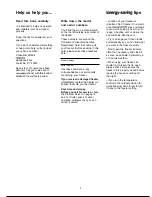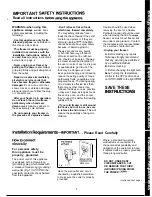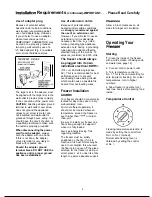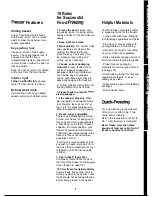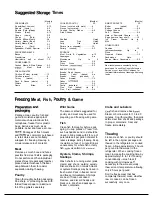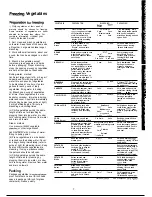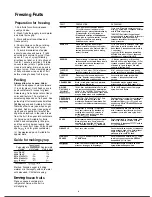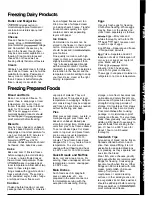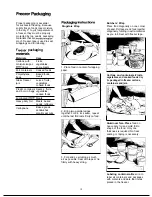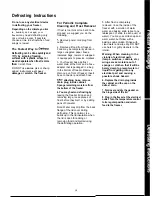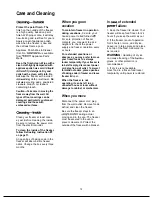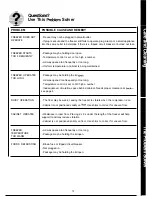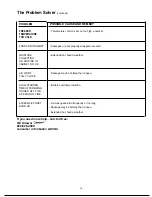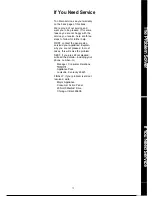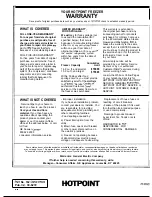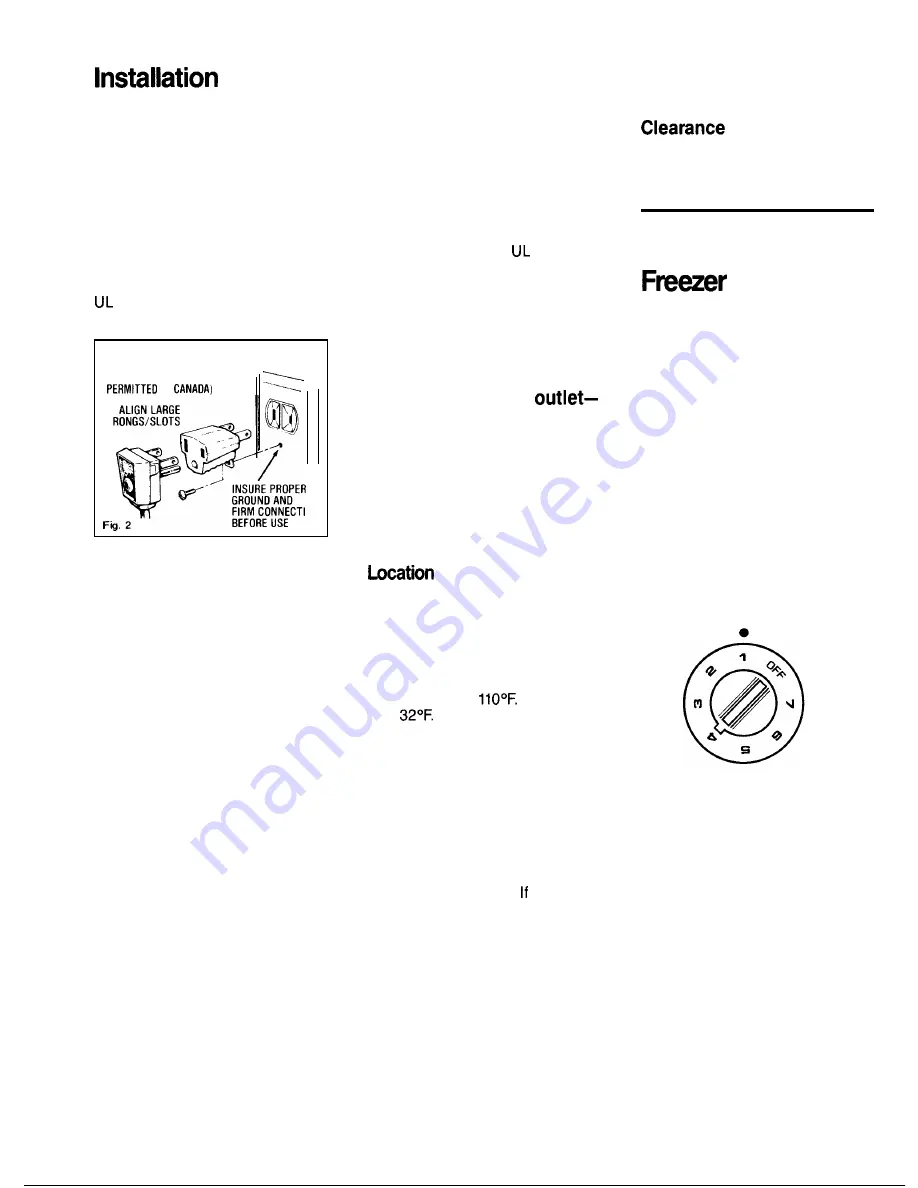
Requirements
(continued)–IMPORTANT. .
Use
of adapter plug
Because of potential safety
hazards under certain conditions,
we strongly recommend against
use of an adapter plug. However,
if you still elect to use an adapter,
where local codes permit, a
TEMPORARY CONNECTION may
be made to a properly grounded
two-prong wall outlet by use of a
listed adapter (Fig. 2) available
at most local hardware stores.
TEMPORARY METHOD
(ADAPTER PLUGS NOT
IN
P
ON
The larger slot in the adapter must
be aligned with the larger slot in the
wall outlet to provide proper polarity
in the connection of the power cord.
CAUTION: Attaching adapter ground
terminal to wall outlet cover screw
does not ground the appliance
unless cover screw is metal, and
not insulated, and wall outlet is
grounded through house wiring. You
should have the circuit checked by
a qualified electrician to make sure
the outlet is properly grounded.
When disconnecting the power
cord from the adapter, always
hold the adapter with one hand.
If this is not done, the adapter
ground terminal is very likely to
break with repeated use.
Should the adapter ground
terminal break, DO NOT USE the
appliance until a proper ground
has been established.
Use
of extension cords
Because of potential safety
hazards under certain conditions,
we strongly recommend against
the use of an extension cord.
However, if you still elect to use an
extension cord, it is absolutely
necessary that it be a
listed
3-wire grounding type appliance
extension cord having a grounding
type plug and outlet and that the
electrical rating of the cord be 15
amperes (minimum) and 120 volts.
The freezer should always
be plugged into its own
individual electrical
(115
volt,
60 Hertz single phase
AC). This is recommended for best
performance and to prevent
overloading house wiring circuits,
which could cause a possible fire
hazard from overheating wires.
Freezer Installation
Your freezer should be conveniently
located for day-to-day use in a dry,
well-ventilated room.
For most efficient operation, it
should not be located where air
temperature around the freezer is
ever higher than
or colder
than
Be sure to install your freezer on a
floor strong enough to support it
when it is fully loaded.
Also see Energy-Saving Tips
regarding location.
The freezer must be solidly
positioned on the floor if it is to
function at its best. Shims maybe
used to accomplish this wherever
the floor is too uneven. the place
selected for the freezer is damp or
moist, place 2 x 4’s under its entire
length to assure adequate support.
. Please Read Carefully
Allow a 3-inch clearance on all
sides for proper air circulation.
Operating Your
Starting
1.
Clean the inside of the freezer
with a mild solution of baking soda
and water (see page 12).
2. Connect cord to power outlet.
3. Turn temperature control to
No. 1. This is the normal setting for
safe long-term freezing. For colder
temperatures, turn to higher
numbers.
4. Allow freezer to operate for at
least two hours before placing food
inside.
Temperature Control
Freezing temperature selection is
made by setting the control from
No. 1 to No.
7
(coldest).
Normal safe freezing level is
obtained by setting the control
at No. 1.
4


